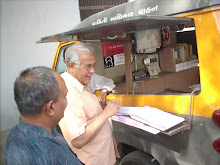Times Now: National: Monday, May 14, 2018.
In the past,
stories of police personnel misusing their authority and clout have emerged
from all parts of the country. It is, therefore, important for one to know the
procedure to seek information from the police department.
Did you know
that an RTI application in India shall not exceed 500 words? Or that the first
RTI ever to be filed in India was addressed to the President and was about
Section 370 in Jammu and Kashmir? Even if you are unaware of such RTI trivia,
it is important for you to know how to file an RTI since it is your
constitutional right to be able to do so.
One of the
most empowering pieces of legislation, the Right to Information (RTI) Act of
2005 enables any citizen to ask the ruling dispensation to furnish details
concerning the operations of any of its departments. The concerned ministry is
then required to furnish the information asked for, within a period of 30 days.
The new act which relaxes disclosures restricted by the Official Secrets Act
1923, codifies a fundamental right of every Indian citizen.
India’s
police force is responsible for upholding the law in the world’s largest
democracy and it is essential for the upholders of the law to follow procedure
and ensure that they do not under any circumstances, indulge in human rights
violations. In the past, stories of police personnel misusing their authority
and clout have emerged from all parts of the country. It is, therefore,
important for one to know the procedure to seek information from the police
department.
- You must address the RTI to the concerned Public Information Officer (PIO) or Assistant Public Information Officer (APIO). Every public authority has a designated PIO or APIO, it is therefore not necessary to name the officer in the application.
- An application on a plain sheet of paper with the information you require qualifies as an RTI.
- Write subject as “Information sought under RTI Act, 2005”.
- There is no need for you to furnish an explanation/need/utility for filing the application.
- It is advisable to compose the application in a fluid language. It can be in English, Hindi or the regional language.
- Through an RTI, you can demand inspection of documents, information in a CD, photocopies of documents or a written reply to a specific question.
- You can also attach any documents that might allow the recipient to answer your query better.
- Once you make an initial payment of Rs 10, the PIO/APIO will review your application.
- For photocopies made of A4 sheets, the RTI Rules stipulate payment of Rs. 2 per page. For pages of other sizes, the applicant is required to bear the cost of photocopies. For purposes of inspection, the first hour is free for the applicant and Rs. 5 is charged for each subsequent hour. These payments can be made through demand draft, cheques or Indian Postal Orders (https://www.epostoffice.gov.in)
- You can also refer to https://rtionline.gov.in/ to file an online RTI.
- When writing to seek information from a police station, it is advisable to mention the jurisdiction of the department you are seeking information from. You can also mention the name and rank of any police officer whom you wish to mention in order to make the PIO understand the nature of the query better.














































































